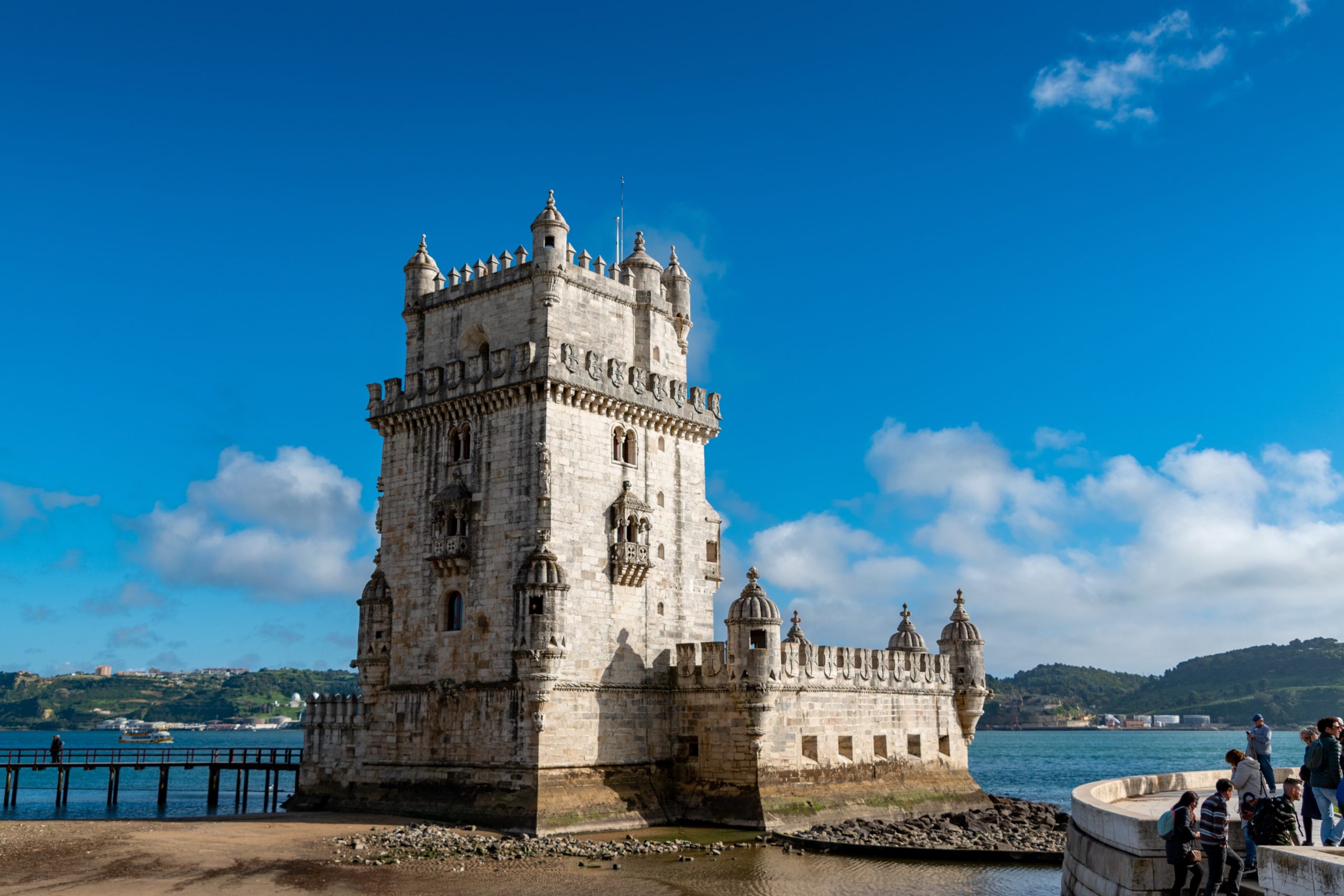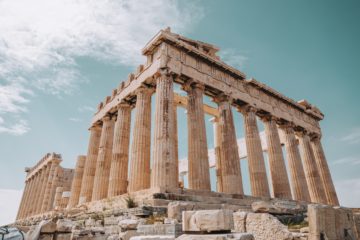Erasmus in Lisbon: Guide for students
If you are going to study in Lisbon, this post is for you. In this guide, we provide you with all the information you need to make your experience as an Erasmus in Lisbon unforgettable.
Student accommodation in Lisbon
Contents
One of the first tasks you will have to do is find accommodation. In this section, we explain the main accommodation options and, on the other hand, the best areas to live in Lisbon.
Erasmus flat or residence?
Choosing between living in a shared apartment or a student residence is a highly personal decision that depends on your individual preferences. It’s important to carefully evaluate both options and consider their pros and cons. If you still don't know which option is best for you, here you have more information.
The most common among students is to live in a shared apartment since the residences that exist are usually more expensive than shared apartments. However, you have to know that some of the residences in Lisbon are Xior, Nido Living, Livensa or Shelter10.
Best areas to live in Lisbon
As for which area is best to live in Lisbon, it will partly depend on where your university is located and the lifestyle you want to lead. Many Erasmus students live in the areas of Alvalade, Areeiro, Campo Pequeno and Alameda, as they are close to both the University of Lisbon and the Instituto Superior Técnico. In addition, in these areas, there are several metro stops, so it is very well-connected to the centre of Lisbon.
Other students look for accommodation in the area Marquês de Pombal. It is one of the most prestigious areas of Lisbon, quiet and with good connections to other areas of the city.
If you want to be in a central area and very close to the party, Bairro Alto is perfect for you. In this neighbourhood, there is always a very good nightlife with bars and nightclubs.
Gastronomy in Lisbon
Portuguese gastronomy is classified within Mediterranean cuisine and is mainly based on seafood. In Lisbon, you can find almost all the typical dishes of Portuguese cuisine, but some that we recommend you try are:
- Bacalao à bras. Cod is the quintessential Portuguese ingredient. This dish is a kind of scrambled cod with potatoes and eggs.
- Pasteis de Belém. This dessert is made with puff pastry and has a filling made from milk, egg yolk and sugar that makes it very sweet. You can't miss the Antiga Confeitaria de Belém, the first pastry shop to start selling these Lisbon sweets.
- Bitoque. It is a typical dish that consists of a pork fillet that is usually accompanied by fried potatoes, rice, egg and salad.
- Francesinhas. Although this dish originates from Porto, it is consumed throughout the country. It is a kind of sandwich made up of layers of bread alternated with meat and sausages and slices of cheese, covered with more cheese and bathed in a beer and tomato sauce.
- Caldo verde. This recipe is prepared with cabbage, potato, onion, garlic and chorizo.
- Grilled sardines. It is a typical dish from Lisbon and southern Portugal.
Here are some examples of typical dishes that you can find in Lisbon. However, it's worth noting that the city has plenty of culinary options to suit all tastes. The area where you will find more restaurants is in Baixa-Chiado.
Leisure and party in Lisbon
If you like to party, in Lisbon you will not get bored. There are many bars, clubs and nightclubs in the city, especially in Bairro Alto and Santos. Some essential places are the Kubu, Urban, Lisboa Río Club, Mome or Lust nightclubs and the Cohiba and Lodo no Cais bars.
These are just some places most frequented by Erasmus students. Obviously, Lisbon is a big city that receives many international students every year, so you will find a great nightlife almost every day of the week.
Cost of living in Lisbon
Regarding the cost of living, we have good news, life in Lisbon is quite affordable. Although being the capital of Portugal and having slightly higher prices than other Portuguese cities, the truth is that it is a fairly cheap city.
The average cost of a student will be around €500 or € 600 per month, but all of this will depend on four variables: accommodation, shopping list, transport and leisure. As for accommodation, this will be one of the highest costs during the Erasmus. Although it depends on many factors, a room in Lisbon can be around €300-400 per month. Regarding transport, you can use transport bonds to move around the city. The monthly subscription (Lisboa Viva card) costs around €30 and you can use the metro, bus, tram or train in the city of Lisbon.
Must-see places
Lisbon has enormous historical relevance. The Portuguese capital has countless tourist spots that you cannot miss during your Erasmus in Lisbon. Some of them are:
- Jerónimos Monastery in Belém. Located in the Belém neighbourhood, it is one of the main examples of Portuguese architecture. It was declared a World Heritage Site by UNESCO in 1983 and served as the residence of the monks of the Order of Saint Jerome, hence its name.
- Castle of Saint George. It was built by the Visigoths in the 5th century and is one of the most important monuments in Lisbon.
- Lisbon Cathedral (Sé de Lisboa). It is the most important religious building in the city. Its entrance is free and it is open every day.
- Santa Justa Elevator. This elevator connects the Baixa with the Chiado neighbourhood. From the terrace, you can get good views of the river, the Plaza del Comercio and the Castle of São Jorge.
- Belém Tower. It is one of the most popular tourist attractions in the entire city. It is a military construction that is located at the mouth of the Tagus River.
Trips from Lisbon
One of the most exciting aspects of the Erasmus experience is the opportunity to travel and explore other cities. From Lisbon, you can easily travel to other parts of the country, as well as neighbouring Spain.
Portugal has an extensive rail network, managed by the company Comboios de Portugal (CP). To move to other Portuguese cities you can travel by Alfa Pendular (high-speed train) or by the Intercidades train (interurban train). You can also travel by bus. One of the bus companies most used by Erasmus students is Flixbus, one of the cheapest options.
If you want to travel to other destinations, you have to know that there is an airport in Lisbon. The Humberto Delgado airport is located on the outskirts of the city and flights depart from there to more than 100 national and international destinations. To go to Lisbon airport we recommend that you take the red metro line (or Línea del Oriente) or some of the bus lines that make the transfer, such as lines 744, 722 and 705.
In this guide for Erasmus students in Lisbon, we have also included some trips to other tourist spots, to get to know other places and cities with great tourist attractions.
- Sintra. Sintra is a small town located one hour by transport from Lisbon. This population accumulates many places to visit but the most famous are Quinta da Regaleira and the Palacio da Pena, one of the most visited monuments in the country.
- Oporto. It is the second-largest city in Portugal and the most important city in the north of Portugal. Here you can visit its old town, the Luis I Bridge or the Porto Cathedral.
- Coimbra. This is a university town, so if you take any trips to this city, you will probably come across many students.
- Madeira. Madeira is an hour and a half away by plane. This Portuguese island is full of charming towns and landscapes that will take your breath away.
- Nazaré. It is a fishing village that, over time, has become one of the most touristic places in Portugal. The highest waves in the world have been recorded here, so if you like surfing, this town is a must.
Tips for students in Lisbon
Finally, some of the advice that we give you for your Erasmus in Lisbon are:
- Become a member of the student associations that there are in Lisbon, since you will be able to benefit from discounts in a lot of places. In addition, these associations organise events, parties and even trips with international students, so it will also be a great opportunity to meet other students. The main student associations in Lisbon are Erasmus Student Network (ESN) and Erasmus Life Lisboa (ELL).
- Request the European Health Insurance Card (EHIC) well in advance.
- The supermarkets that you will find most frequently in Lisbon are Pingo doce, Minipreço and Continente. However, there are also foreign supermarket chains such as Auchan or Mercadona.
We hope that our guide for Erasmus students in Lisbon will help you to enjoy the Erasmus experience.








0 Comments